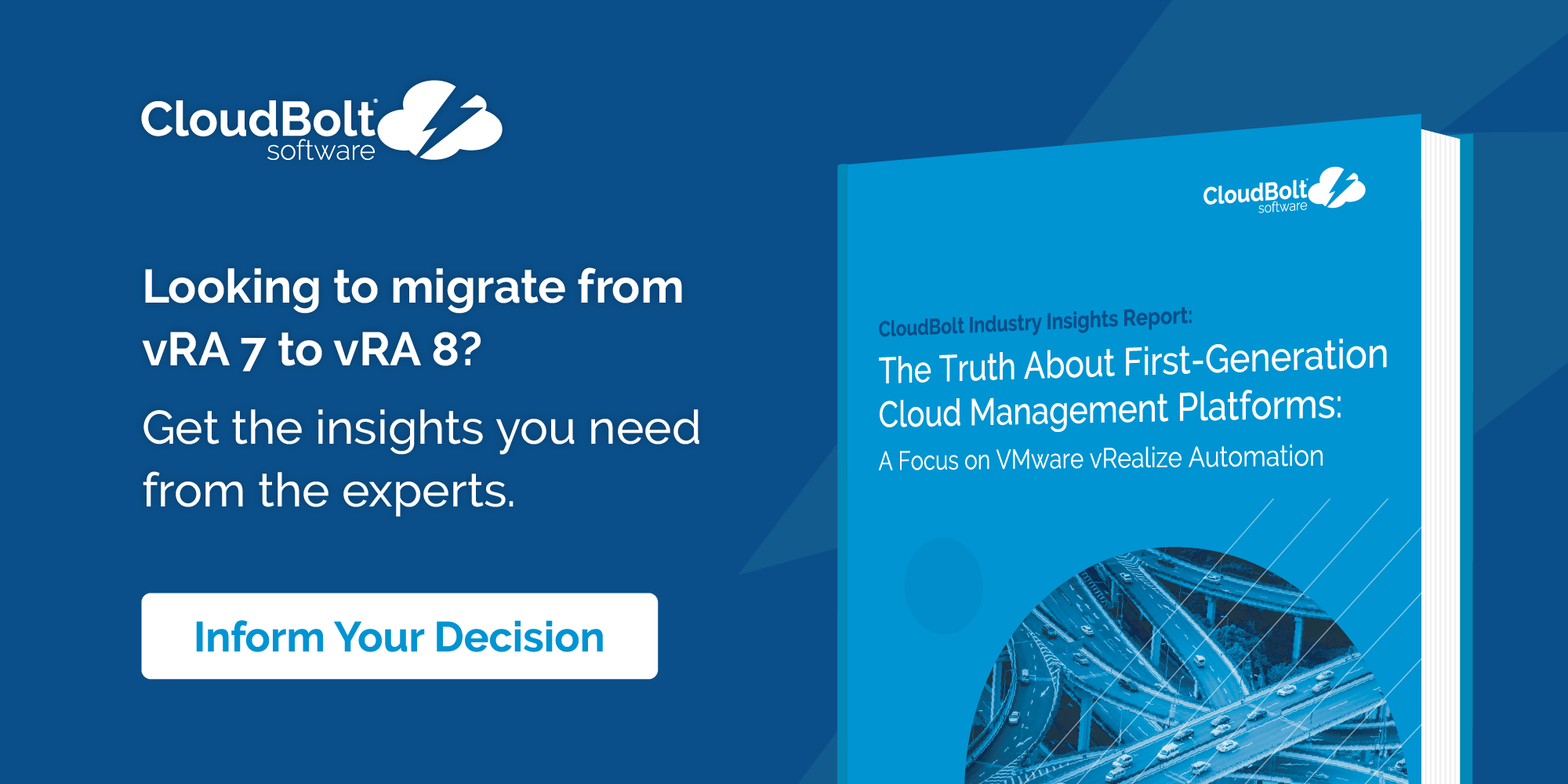The Truth About vRA 7

With at least 80% market share as a virtualization platform, VMware is easily the market king. Therefore, it’s not surprising that when people wished to extend private and public cloud usage and needed a cloud management platform, many chose VMware vRealize Automation (vRA) to manage and automate their hybrid cloud IT infrastructure.
But that led to the single biggest question mark emerging out of our newest CloudBolt Industry Insights report: Will existing vRA customers, currently on version 7.6 or earlier, make the migration to vRA 8.0+ prior to the sunsetting of support for vRA 7.x (currently scheduled for September 2022 – which already got pushed back once from April 2022)? And for those who will choose not to, why?
In May-July 2021, CloudBolt commissioned a global survey leveraging Pulse Research’s proprietary platform and vast IT audience. The survey was opened to companies of all sizes and 200+ responses were collected from vRA customers globally. The distribution of titles for respondents ended up being Director (56%), VP (27%), and CXO (17%). Here’s what we gleaned: Gone are the days of one public cloud and all workloads being on VMware. Organizations want to offer true self-service across multiple clouds and virtualization platforms. They want Terraform, they want CI/CD/CIT, they want DevOps. These are challenging requirements – even for a market leader.
The Trouble with vRA 7
While other problems were identified, the following were cited as the Top 3 challenges with vRA 7:
- Requires enormous amount of custom code (64%)
- Movements to major releases require re-writes of all custom-built integrations (59%)
- Lack visibility around what moves in and out of integrations (53%)
92% of respondents have custom coded at least one quarter of their integrations in vRA; 59% have at least half. Automation does NOT happen without integrations. Considering the time, expertise, continual care and feeding required to create and maintain vRA integrations, it’s no surprise customers have delayed a move to the latest edition.
Another huge contributing factor to delayed vRA 8 deployments is most custom integrations for vRA 7 will have to be re-written for vRA 8. The time and effort alone are forcing organizations to re-evaluate the Return on Investment (ROI) with vRA and potentially consider alternatives. 59% of respondents view this as a significant issue. Many have scars from the vRA 6 to 7 migration upheaval. Similar motion is required for vRA 8, and customers are much more hesitant this time around.
Tracking and visibility seems to generally be an issue for hybrid cloud deployments. And given the amount of custom coded integrations vRA customers have, tracking and seeing the flow of data between those integrations becomes exponentially more challenging (for example, the ability to visualize, audit, or troubleshoot from the component level integrations such as IP/DNS assignment, networking, security, and configuration/directory/service management). 53% of respondents recognize that vRA simply does not provide this information – and neither does any custom coded integration.
Related Blogs

The Future of Cloud Cost Management and Optimization is Here with CloudBolt
It’s an exciting time to be in the Cloud Cost Management and Optimization space. The landscape is quickly changing as…

